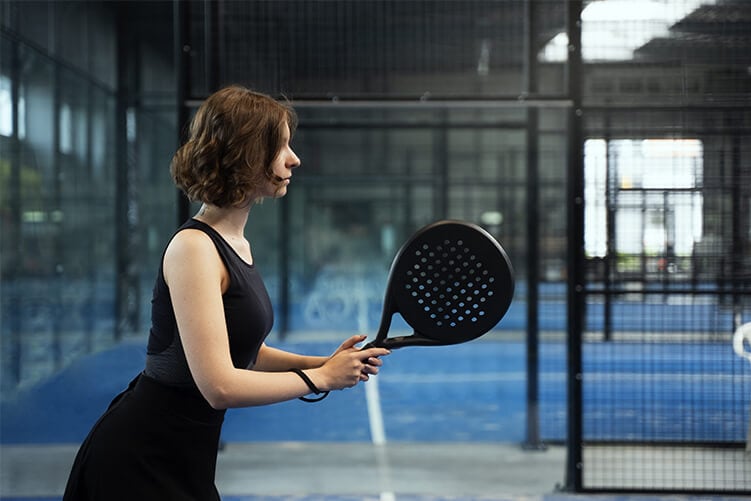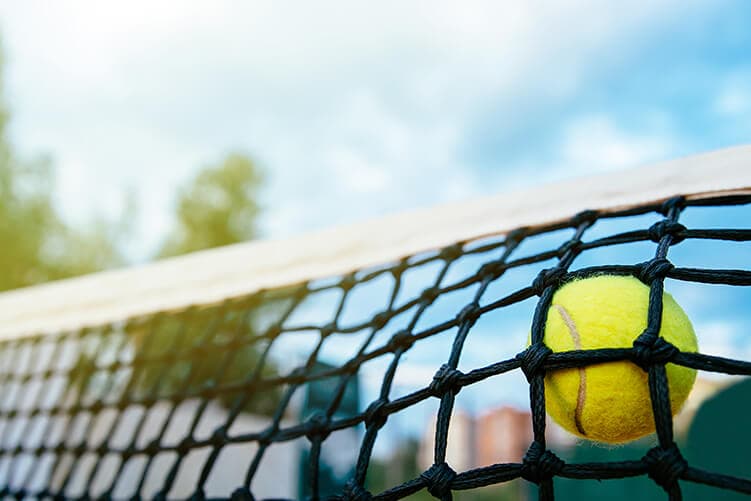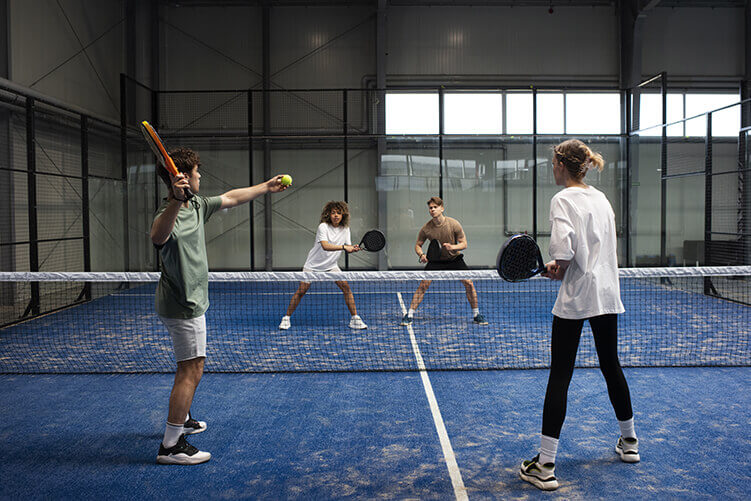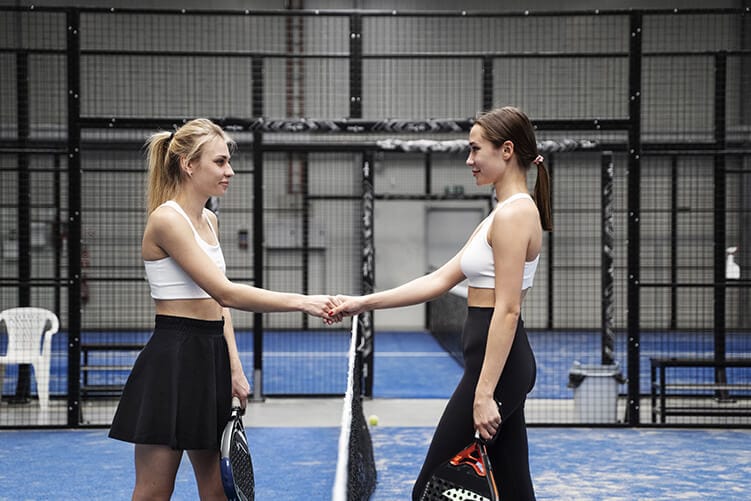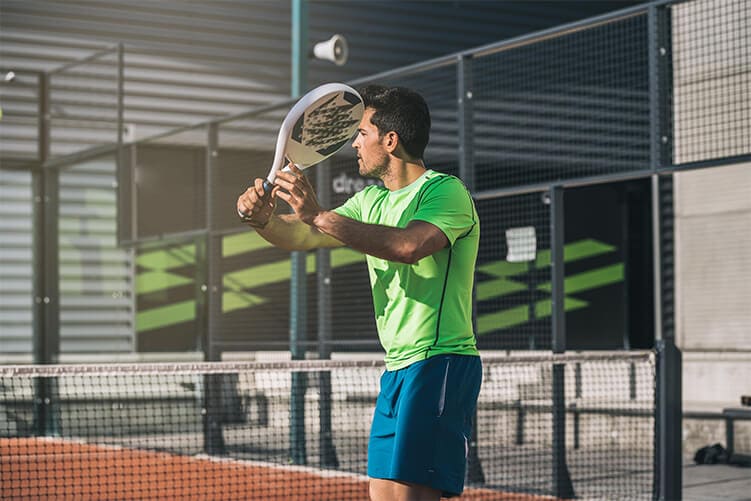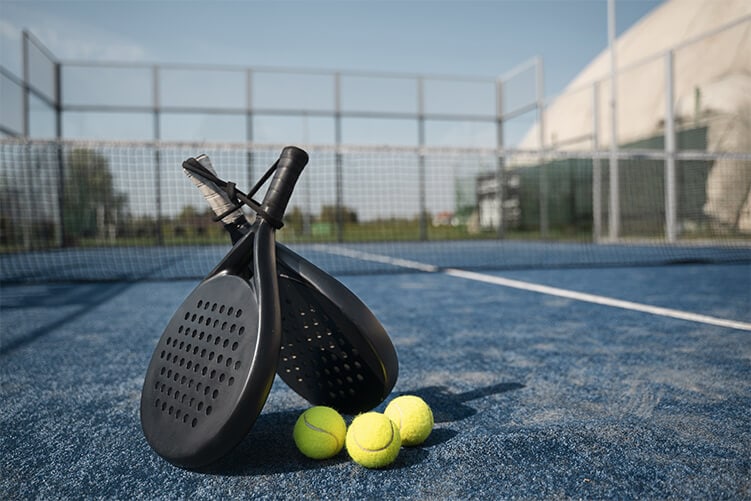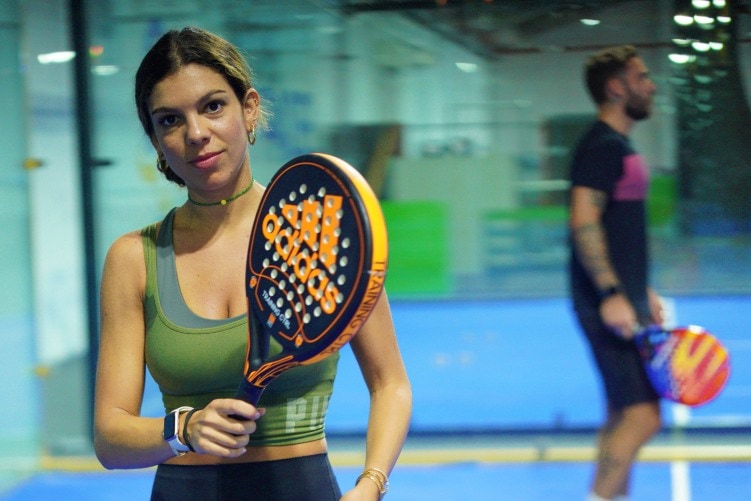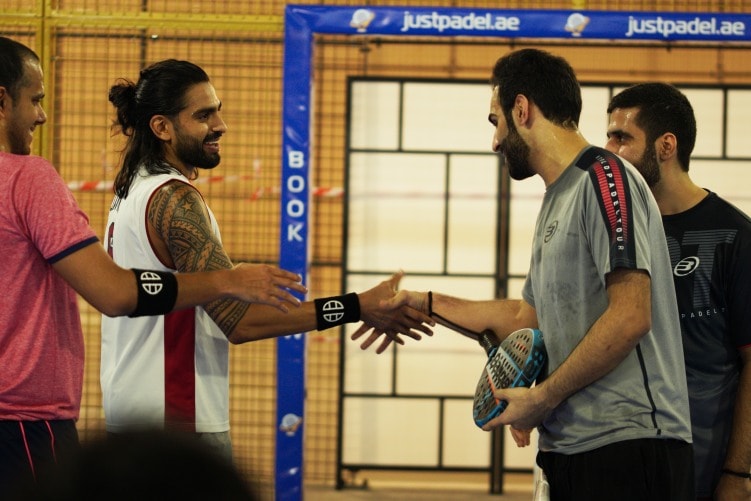Welcome to the exciting world of Padel! If you’re looking for a fun, fast-paced sport to try, Padel might just be the perfect fit. This racket sport is similar to tennis but with a few key differences that make it unique.
If you’re just starting with Padel, don’t worry, we’ve got you covered. In this comprehensive guide, we’ll provide you with all the beginner Padel tips and tactics you need to get started.
By the end of this guide, you’ll be well-equipped with the essential knowledge and skills to play Padel like a pro. So, let’s begin this exciting journey that is the start of Padel!
Let’s dive into the basics of Padel and start your Padel journey!
Understanding the Basics of Padel
Before diving into the exciting world of Padel, it’s essential to understand the basics. Let’s start by exploring the Padel court layout. The court is typically 10 meters wide and 20 meters long, surrounded by glass walls and wire mesh fences. The walls are used as part of the game, allowing players to play off of them as they would with the ground.
Similar to tennis, Padel is played with a paddle and ball. The paddle is smaller than a tennis racket and has no strings, and the ball is slightly smaller than a tennis ball and less heavy.
Now, let’s talk about Padel rules. The game is usually played in doubles, and the objective is to hit the ball in such a way that the opposing team can’t return it before it bounces twice. The ball can be played off any wall or the ground, and the serving team must hit the ball into the opposing team’s service area diagonally across the court.
Regarding Padel equipment, you’ll need a Padel paddle, a few Padel balls, and appropriate footwear, with specific Padel shoes preferred. Clothing should be comfortable, with no restriction of movement.
Padel Strokes
There are a few basic Padel strokes you’ll need to master before playing the game fluently.
The forehand is similar to a tennis forehand, with the difference that the Padel stroke requires a shorter backswing and a follow-through to the side.
The backhand stroke is crucial in Padel, given that most of the time, the ball will bounce off the left-hand wall. The stroke should be a two-handed backhand, with the right hand providing most of the power and the left hand controlling the ball’s direction.
Finally, the smash is one of the most crucial Padel strokes. It’s similar to a tennis smash with the difference that the player must hit the ball on the way up and not at the highest point.
With these basics down, you’re ready to take on the world of Padel!
Mastering Padel Techniques and Strategies
Now that you have a solid grasp of the Padel basics, it’s time to take your game to the next level. To become a skilled Padel player, you’ll need to master a range of techniques, strategies, shots, and tactics that will give you an edge on the court.
Padel Techniques
There are a variety of Padel techniques that can help you improve your game. These include volleying, lobbing, smashing, and serving. Practicing these techniques will help you develop the muscle memory and coordination needed to execute them effectively during a game.
Padel Strategies
One of the key aspects of becoming a skilled Padel player is developing a range of strategic approaches that you can use to outmaneuver your opponents. Some effective strategies include playing aggressively, focusing on your opponent’s weaknesses, and mixing up your shots to keep your opponent guessing.
Padel Shots
There are several types of Padel shots that you should master to become a skilled player. These include forehands, backhands, volleys, smashes, and lobs. Each shot requires a unique technique and strategy, so it’s important to practice them all regularly to ensure you can execute them effectively during a game.
Padel Tactics
In addition to mastering various Padel shots and techniques, it’s also essential to develop a range of tactical approaches you can use during a game. These tactics include playing aggressively, moving your opponent around the court, and communicating effectively with your partner. By developing a range of effective tactics, you will outwit your opponents and win more matches.
With practice, dedication, and a willingness to learn, you can become a skilled Padel player in no time. Keep working on your techniques, strategies, shots, and tactics, and you’ll be well on your way to becoming a Padel pro.
Improving Your Padel Skills
Now that you have a basic understanding of Padel, it’s time to focus on improving your skills on the court. The best way to do this is through consistent practice and training.
Padel Drills
Drills are an excellent way to practice specific Padel skills, such as groundstrokes, volleys, or serves. Some popular drills include the Wall Drill, where players hit the ball against a wall to improve their accuracy and control, and the L-Drill, which focuses on footwork and agility.
Padel Practice
Regular practice is crucial to improve your overall game performance. Try to play Padel as you can, whether with friends, family, or other players in your community. Consider joining a local Padel club or league to get more practice time and meet other players.
Padel Training
In addition to traditional practice, there are various training methods you can use to enhance your skills. These include cardio workouts, strength training, and agility drills. Focus on improving your endurance, speed, and coordination to become a better Padel player.
Padel Exercises
There are many exercises you can do off the court to improve your Padel game, such as lunges, squats, and core strengthening exercises. These exercises can help you build strength, flexibility, and balance, which are all essential for Padel players.
Remember, consistency and dedication are crucial to improving your Padel skills. Incorporate drills, practice, training, and exercises into your routine, and you’ll see your game performance soar!
Final Thoughts
Thanks for following our guide to get started playing Padel! We hope you feel confident and ready to take the field like a pro.
Remember, even the most skilled players start as beginners, so don’t be discouraged if you don’t get everything right away. Keep practicing, and don’t hesitate to ask for help or advice.
Join the Padel Community
Padel is a community-driven sport with a unique culture and passionate players. Joining a local Padel club or community can be a great way to meet like-minded people, improve your skills, and enjoy the game in a supportive environment.
Playing Padel is not only a great way to stay active but also an opportunity to have fun and make new friends. We hope you enjoy this exciting sport and all the benefits that come with it.
Now go ahead and book your court with Just Padel to start playing!

